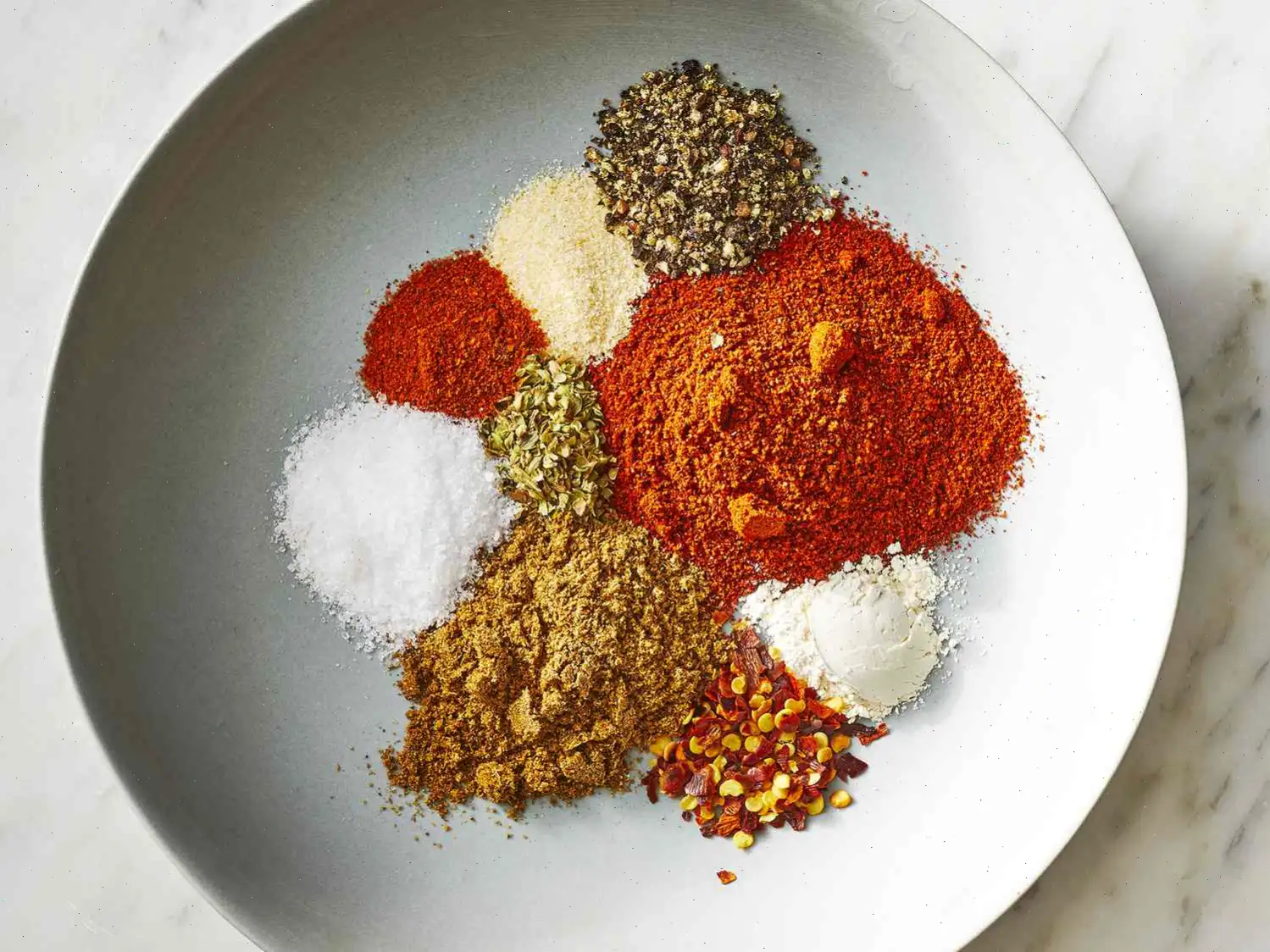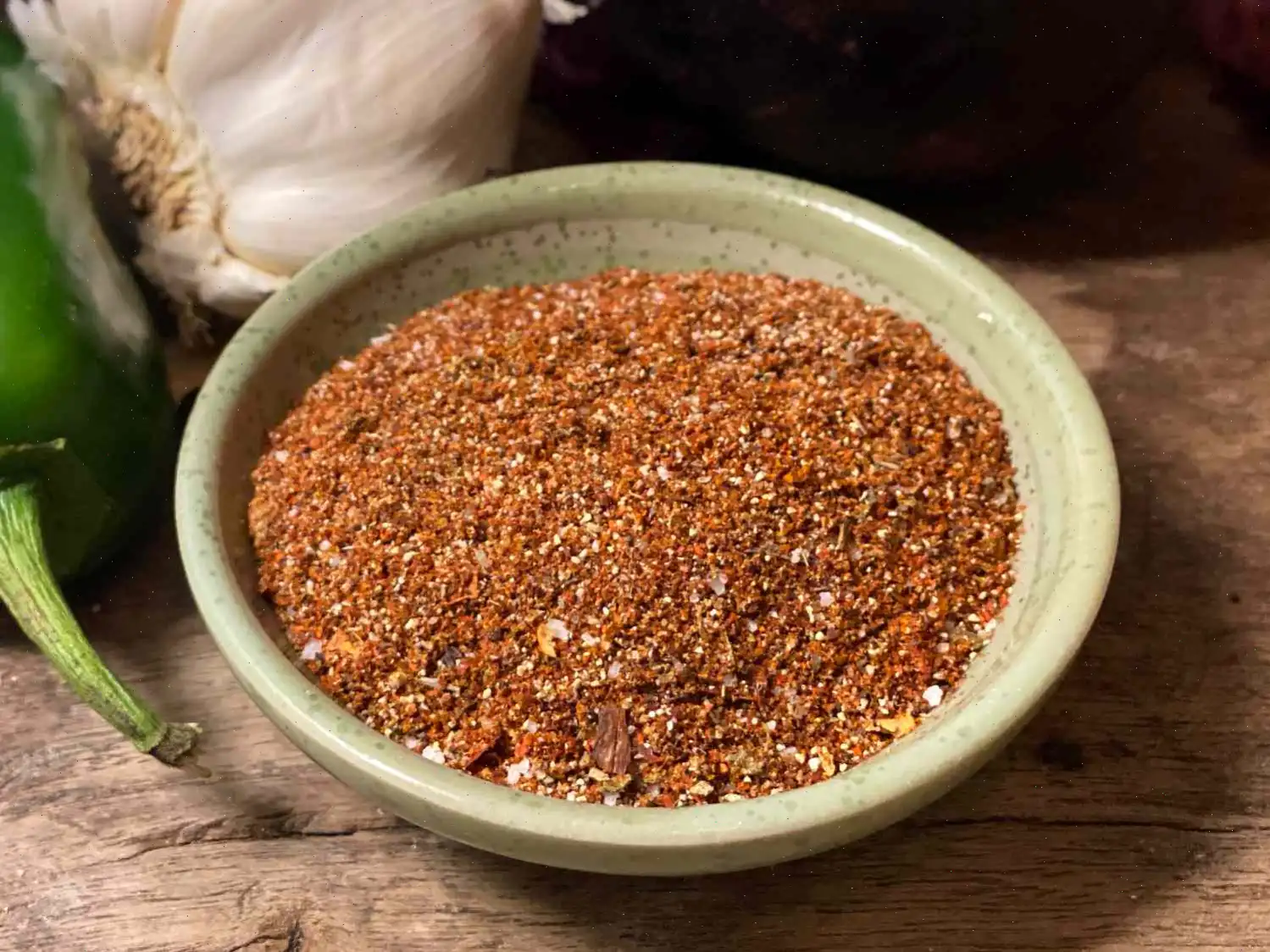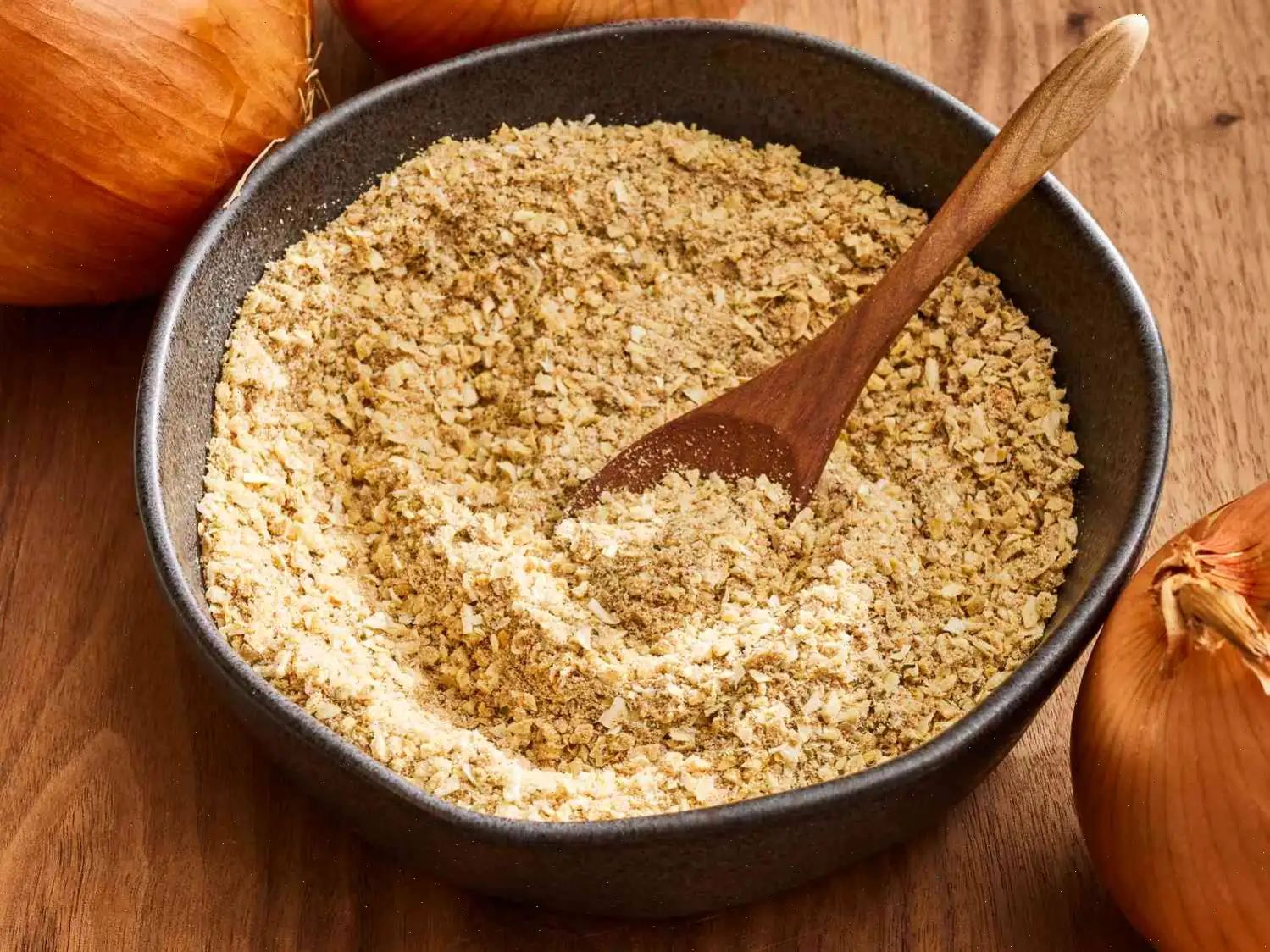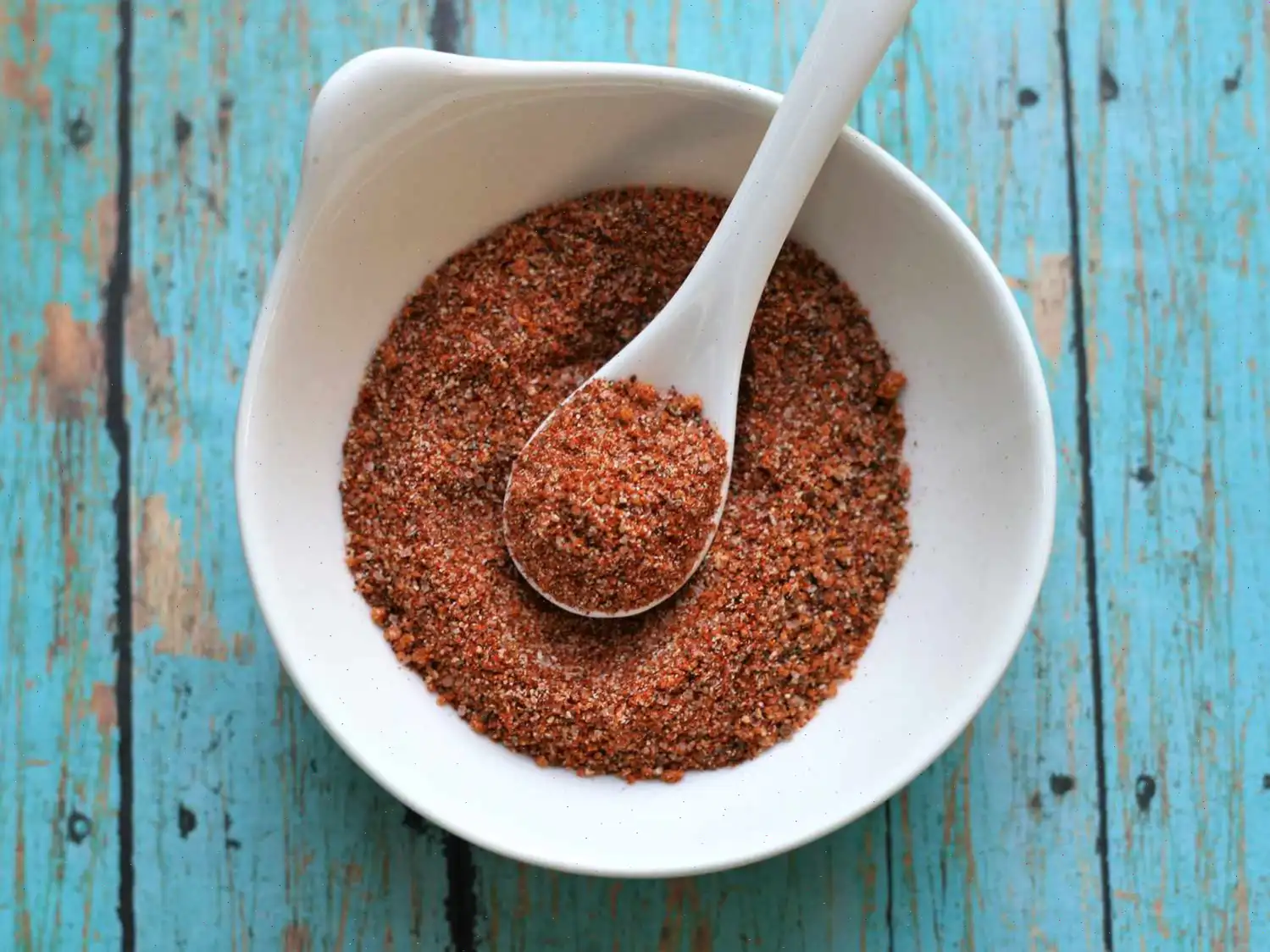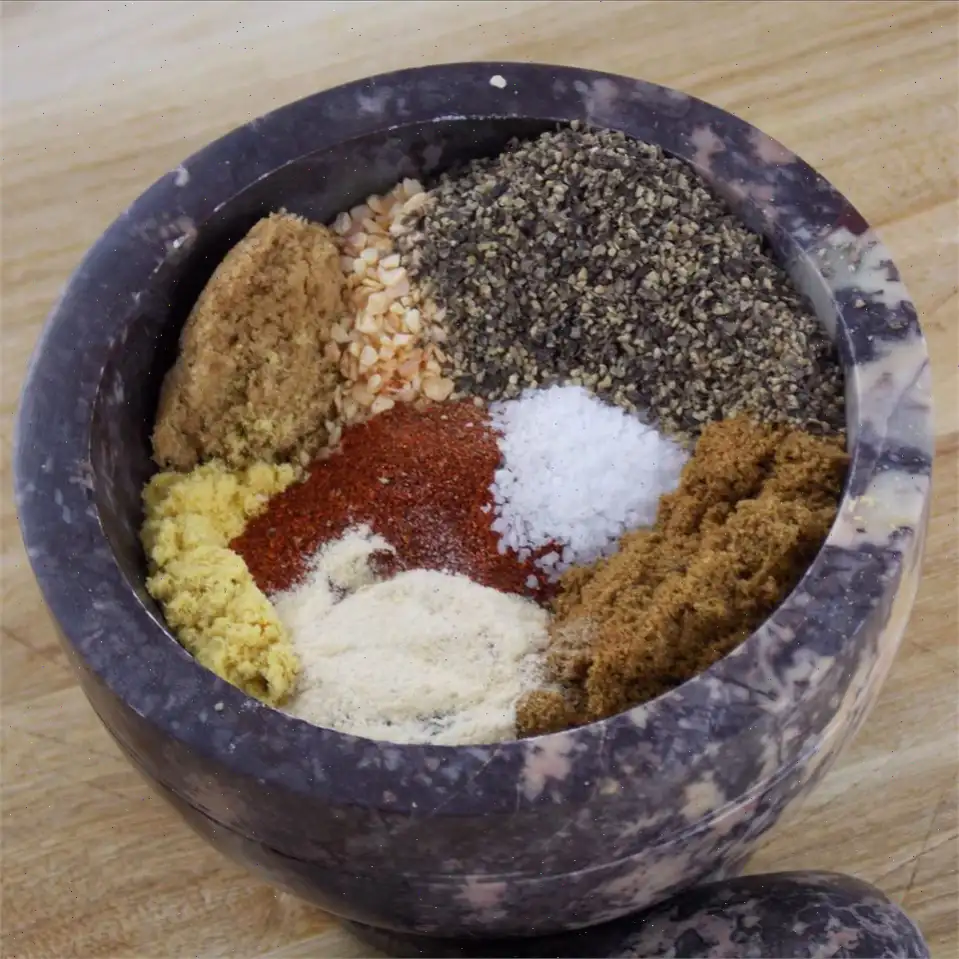
Taco Seasoning Recipe (with Video)
Skip the store-bought stuff and make your own taco seasoning. This top-rated taco seasoning recipe, which has a near-perfect rating and more than 7,500 rave reviews, is incredibly popular among Allrecipes community members - and for good reason! It's easy-to-follow, easy-to-use, and versatile.
Learn how to make taco seasoning at home, why you should go the DIY route, and how to substitute it for a store-bought packet:
What Is Taco Seasoning?
Taco seasoning is a savory spice blend that's used to add warm, spicy, and smoky flavor to all kinds of dishes, from tacos to soups and casseroles. You can buy taco seasoning at the store or make it at home with ingredients you probably already have on hand.
Homemade vs. Store-Bought Taco Seasoning
Why make DIY taco seasoning when you could just buy a packet at the grocery store? Here are just a few of the reasons why homemade beats store-bought:
- You'll know exactly what's going into your spice blend when you make it at home because you're assembling it yourself.
- You can also control ingredient amounts, which is especially helpful if you're watching your sodium intake.
- Making your own taco seasoning is actually much cheaper in the long-run, even if you don't already have all the ingredients on your spice rack. You get a lot more bang for your buck when you're using your own ingredients.
- DIY taco seasoning allows you to adjust the recipe to suit your taste. Don't like paprika? Leave it out! Like things extra spicy? Add more chili powder. Get as creative as you want - it's your taco seasoning, after all.
What's In Taco Seasoning?
Most taco seasoning mixes contain salt, warming spices (such as paprika, oregano, and chili), onion powder, and garlic powder. This top-rated recipe is made with chili powder, ground cumin, dried oregano, sea salt, black pepper, ground paprika, garlic powder, onion powder, and crushed red pepper flakes.
How Much Taco Seasoning Is In a Packet?
If your recipe calls for one packet of taco seasoning, how much DIY mix should you use? Different commercial brands package their taco seasonings in different amounts, but most packets contain about 1 ounce or 3 tablespoons of product.
Use 3 tablespoons of homemade taco seasoning for every packet your recipe calls for.
How to Use DIY Taco Seasoning
Of course, this top-rated seasoning is perfect for adding tons of flavor to ground meat for tacos. But that's not the only way to put it to good use! It's also a delicious addition to soups, stews, casseroles, dips, and so much more.
How to Store Taco Seasoning
Store your homemade taco seasoning in an airtight and keep it in a cool, dark place. It should remain at peak freshness for about six months.
Allrecipes Community Tips and Praise
- "Just the right blend of everything," raves Suzanne Allen. "Now I don't have to skip over a recipe because I don't have the seasoning 'envelope' on hand."
- "This was better than I had ever expected," according to MF135GAS. "I use it all the time. Love the ability to be able to make some fine adjustments. Adding a bit of cornstarch thickens the taco meat a bit."
- "Excellent taco seasoning," says SLJ6. "I used this recipe to make Beth's Tex Mex Dip. The mix of seasonings was perfect just like the package mix you buy at the store."
Ingredients
This recipe was developed at its original yield. Ingredient amounts are automatically adjusted, but cooking times and steps remain unchanged. Note that not all recipes scale perfectly. Original recipe (1X) yields 10 servings:
- 1 tablespoon chili powder
- 1 teaspoons ground cumin
- 1 teaspoon sea salt
- 1 teaspoon ground black pepper
- teaspoon ground paprika
- teaspoon garlic powder
- teaspoon onion powder
- teaspoon crushed red pepper flakes
- teaspoon dried oregano
Directions
- Gather all ingredients.
- Mix chili powder, cumin, salt, pepper, paprika, garlic powder, onion powder, red pepper flakes, and oregano together in a small bowl until combined.
- Store in an airtight .
Nutrition Facts
Servings Per Recipe: 10
| Amount per serving | Calories | % Daily Value* |
|---|---|---|
| Total Fat | 0g | 0% |
| Saturated Fat | 0g | 0% |
| Cholesterol | 0mg | 0% |
| Sodium | 235mg | 10% |
| Total Carbohydrate | 1g | 0% |
| Dietary Fiber | 0g | 2% |
| Total Sugars | 0g | 0% |
| Protein | 0g | 0% |
| Vitamin C | 0mg | 0% |
| Calcium | 8mg | 1% |
| Iron | 0mg | 2% |
| Potassium | 29mg | 1% |

Origin Story
Taco seasoning has its roots in the culinary traditions of Mexico, where tacos, as a dish, have been enjoyed for centuries. The seasoning mix itself, however, was popularized in the United States in the mid-20th century. While tacos were already a staple in Mexican cuisine, the creation of pre-packaged taco seasoning blends revolutionized the way this dish was prepared and enjoyed worldwide. Initially designed to simplify cooking, taco seasoning quickly gained popularity for its rich, bold flavors that could be added to ground meats, beans, or vegetables. Today, taco seasoning is a kitchen essential in many households, particularly in North America, and has become a key component of taco nights and other Mexican-inspired meals.
Regional Variations
Though the concept of taco seasoning is widely recognized, the specific blend of spices can vary from region to region. In northern Mexico, taco seasonings tend to be milder, using fewer chili-based spices, while in the southwestern United States, the mix is often bolder, with increased heat from chili powder, paprika, and red pepper flakes. In fact, regional preferences can result in subtle differences in flavor profilessome people might prefer the earthy warmth of cumin, while others might go heavier on garlic or oregano. These regional differences reflect the diversity of taco culture and the adaptability of taco seasoning itself.
Difference from Similar Dishes
While taco seasoning shares similarities with other spice blends used in Tex-Mex and Mexican cooking, such as fajita seasoning and chili powder mixes, there are distinct differences. Taco seasoning is typically more focused on earthy and smoky notes from cumin, paprika, and chili powder, while fajita seasoning tends to be brighter with a hint of citrus, often incorporating lime zest and coriander. Chili powder, another common seasoning mix, is usually spicier and more straightforward in flavor, without the layered complexity of taco seasoning. The balance of spices in taco seasoning makes it versatile enough to be used in a variety of dishes, from tacos and burritos to soups and dips, whereas other spice mixes might be more limited in their applications.
Where It's Typically Served
Taco seasoning is most commonly used to season ground beef, chicken, or pork for tacos, but it has a wide range of applications in Mexican and Tex-Mex cuisine. It can be sprinkled over roasted vegetables, used to flavor rice or beans, or even stirred into sauces and dips for added depth. Beyond tacos, it is a common ingredient in dishes like chili, enchiladas, and taco salad. In many homes, taco seasoning is a staple for weekly taco nights, but its versatility allows it to be used in a variety of other meals, making it a go-to ingredient in both casual and festive occasions.
Interesting Facts
Did you know that taco seasoning was initially developed to help people make tacos quickly and efficiently at home, especially when fresh ingredients were hard to come by? The pre-packaged versions of taco seasoning, which first hit grocery store shelves in the 1950s, made it easier for home cooks to replicate the flavor of restaurant-style tacos without requiring extensive knowledge of Mexican spices. In fact, many of the spices in taco seasoning, such as cumin and chili powder, have deep historical roots. Cumin, for instance, has been used in cooking for over 5,000 years and is a key ingredient in many global cuisines, from Indian curries to Mediterranean dishes. Taco seasoning's simplicity and ease of use have made it a beloved spice mix in many kitchens, bridging cultural and culinary gaps while adding a distinctive flavor to a variety of dishes.
FAQ about Taco Seasoning Recipe (with Video)
Comments
John Hall
05/05/2025 04:16:49 PM
I made some modifications to this recipe by doubling the amount of garlic and onion, as I'm a big fan of those flavors. Instead of using dried garlic and onion, I prefer to use fresh ingredients when possible. I also added 1 teaspoon of cornstarch (or 2 teaspoons of flour as an alternative) to help the spices adhere better to the meat and create a thicker sauce. While the spice blend was good, I felt like something was missing. After exploring other recipes, I came across one that mentioned using a beef bouillon cube. I used Better than Bouillon paste (beef or chicken) and added a teaspoon of it while cooking the beef. The difference it made was remarkable! It added a depth of meaty flavor that really elevated the dish. Regardless of which version of the recipe you follow, I highly recommend incorporating a meat stock paste or something similar (just be mindful of the additional salt content from bouillon if you prefer a less salty dish). Although the recipe doesn't mention it, adding 1/4 to 1/2 cup of water towards the end of the cooking process after browning the meat with the seasonings helps the flavors meld together and allows the sauce to thicken (thanks to the cornstarch). This step is taken from the instructions on old seasoning packets I used to buy, and it's one I find essential for a well-infused sauce.
Maria King
08/15/2024 12:15:05 PM
This recipe is undeniably delicious!! Thank you for sharing it. I am never going back to buying pre-packaged taco seasoning again!! I appreciate being able to make this recipe using organic ingredients, and I especially love that it's MSG FREE!! What worked best for me was adding roughly 2/3 cup of water to 3 tablespoons of seasoning per pound of meat for optimal flavor. Additionally, I like to include 1 tablespoon of flour in the recipe as it helps the seasoning adhere to the meat better.
Eric Taylor
02/15/2023 02:31:00 AM
Very efficient! There is no need to purchase pre-packaged Taco Seasoning. I followed the recipe with slight modifications, reducing the amount of red pepper flakes and omitting onion powder as I didn't have any on hand. I cooked 1 & 1/4 lb. of lean ground beef with fresh garlic, drained excess fat, then added the homemade Taco seasoning along with 1/2 cup of fresh chopped onions and 1 cup of water. I brought it to a boil and simmered for about 15 minutes. In the future, I would use 2/3 or 3/4 cup of water to avoid excess liquid, although it wasn't a major issue. The tacos turned out very delicious, and my husband loved them!
Gregory Mitchell
03/07/2024 01:27:57 AM
This recipe truly saved the day! While preparing the ingredients for a "seven layer taco dip," I realized I was out of taco seasoning. In a panic, I quickly searched online and came across this gem. I mixed it with cream cheese and sour cream to taste it first, and it was delicious. It worked wonderfully in the dip too! If I had known how simple it was to make my own taco seasoning, I would have been doing it for ages. The only modification I made was reducing the chili powder to 1/2 tablespoon. Overall, a fantastic recipe that I will definitely make again. Thank you, Bill, for sharing this recipe!
Emma Moore
12/24/2023 02:07:39 AM
My new favorite taco seasoning! Absolutely love the spiciness! Following the suggestions of other reviewers, I used 3 tablespoons per pound of meat, along with 1 tablespoon of flour and 1/2 cup of water. I highly recommend it!
Samantha Moore
04/15/2024 07:37:26 PM
This Taco seasoning recipe is fantastic! My family absolutely adores it.
Jennifer Perez
12/27/2023 10:19:34 PM
I love preparing this in advance and keeping it handy. It has been my favorite for a few years now.
Amy Johnson
03/11/2025 06:13:36 PM
We frequently use this product.
Jerry Baker
11/19/2022 10:01:28 PM
Much better than what you can buy at the store. This will definitely become a regular in my cooking repertoire!



